ON (signed)
by Eamonn Doyle
Photographs: Eamonn Doyle
Publisher: D1
104 pages
Pictures: 51
Year: 2015
ISBN: 9780992848712
Price: 350 €
Comments: Hardcover, Limited edition of 999. Three different covers printed with colour foils and deboss. 333 of each cover, 38.5cm x 28.5cm, 51 Black & White tritone printed images printed on Lessebo design naturel 150 gm paper. Blue cover version. Condition: new.
Eamonn Doyle’s second photo-book, ‘ON, follows last year’s ‘i’, a collection of street portraits from Dublin city centre. In ‘ON’, black and white figures stalk across Dublin streetscapes, by turns lost, menacing, wary, browbeaten or entranced – but always at odds in some way with their environment.
As in ‘i’, the photographs were mostly taken on Dublin’s Parnell Street and O’Connell Street. But here the historic role of those two streets as zones of resistance, protest and insurrection is far more present. The very title of the book itself evokes a resistance – that doggedly existential kind identified by Samuel Beckett’s narrator in ‘The Unnameable’: ‘You must go on, I can’t go on, I’ll go on.’
The figures are dynamic – muscles taut, heads in mid-turn, bodies in motion. Some flee the photographic gaze itself. Others stare challengingly down the barrel of the lens. Most appear caught up in projects so intensely private that they have an air of total inaccessibility. Rarely does the photographic act intrude so little on the lives of its subjects. Paradoxically, the energy is sought at precisely those moments when the unruly subjects look most likely to tear the images asunder.
The central drama of the book could thus be said to be its subjects’ struggle with representation – not necessarily against it, but writhing, wriggling, jockeying with it. The resulting images invariably draw attention to the photographic act. One never forgets that these images have been selected, framed, constructed. One is never tempted to identify the image with the subject of the image or to respond ‘I know exactly how that person feels.’ The interiority of the subjects is preserved; their dignity remains intact.
‘ON’ opens out to history more directly than its predecessor. Whereas ‘I’ was preoccupied with figures consumed by introspection, the dramas in ‘ON’ are far more environmental. Dublin’s hermetic seal has cracked open and the rest of the world has somehow spilled in. These subjects are photographed mostly from the front and from a lower angle. It’s a presentation that opens out their world, contextualising them by placing them against an architectural backdrop. Where the mysterious, often faceless figures of ‘i’ were often flattened against their worlds, the subjects of ‘ON’ stand out and strike out against their environments, often looming against skies in a way that speaks of possibility, even as they nurse wounds or eye each other suspiciously.
- John McMahon
Available in with red or green cover!
More books by Eamonn Doyle
-
END. (signed - last copy)
by Eamonn Doyle
sold out -
K. (signed)
by Eamonn Doyle
Euro 140 98.00 -
i (signed)
by Eamonn Doyle
sold out -
ONE (signed)
by Eamonn Doyle
Euro 70 49.00
more books tagged »urban « | >> see all
-
The Gardener (book + print)
by Jan Brykczynski
sold out -
Black & White (signed)
by Bruce Davidson
sold out -
Docklands (signed)
by Sem Langendijk
sold out -
Momentum (signed)
by Andreas H. Bitesnich
Euro 250 -
Manchester 1970s
by John Bulmer
sold out -
Still Lifes
by Elfie Semotan
sold out
more books tagged »portrait« | >> see all
-
Son and Bitch (signed - last copy)
by Ren Hang
Euro 2200 -
Ghosts In My Car
by Andreas Frei
Euro 29 -
Misao The Big Mama And Fukumaru The Cat
by Miyoko Ihara
sold out -
Easter and Oak Trees (signed - review copy)
by Bertien van Manen
Euro 45 -
Etan & Me (signed)
by Viviane Sassen
sold out -
I'm Good I'm Great I'm Wonderful
by Vesselina Nikolaeva
Euro 15
more books tagged »Ireland « | >> see all
-
Beyond Maps and Atlases (signed) - used copy
by Bertien van Manen
Euro 65 52.00 -
Beyond Maps and Atlases (signed)
by Bertien van Manen
Euro 65 -
Dublin (last copy)
by Krass Clement
Euro 77 -
Flaming Grace (signed)
by Vivian Keulards
Euro 40 -
Ghosts of the Faithful Departed
by David Creedon
sold out -
Border Roads 1990 –1994
by Tony O'Shea
Euro 9.50
more books tagged »street photography« | >> see all
-
MASAHISA FUKASE
by Masahisa Fukase
sold out -
1973
by Keiichi Tahara
Euro 44 -
London Charivari 1980 - 1985
by Mike England
sold out -
Italia (signed - last copies)
by Martin Bogren
Euro 95 -
DEEPER SHADES #01 NEW YORK (book + print)
by Andreas H. Bitesnich
Euro 470 -
Tokyo Reveries (book + print)
by Cristiano Guerri
Euro 129
more books tagged »dublin« | >> see all
more books tagged »black and white« | >> see all
-
Lulu (signed)
by Saori Ninomiya
sold out -
The Stars - Eclisse #6
by "nobody in particular"
sold out -
The Grunwick Dispute 1977 "We are Lions"
by Homer Sykes
sold out -
Invisible City
by Ken Schles
Euro 65 -
Zine Collection N°6: Business as Usual (signed + print)
by Brian Griffin
sold out -
One Picture Book 76: Portraits ii (signed + print)
by Leon Borensztein
Euro 89
Random selection from the Virtual bookshelf josefchladek.com
ON (signed)
by Eamonn Doyle
Photographs: Eamonn Doyle
Publisher: D1
104 pages
Pictures: 51
Year: 2015
ISBN: 9780992848712
Price: 350 €
Comments: Hardcover, Limited edition of 999. Three different covers printed with colour foils and deboss. 333 of each cover, 38.5cm x 28.5cm, 51 Black & White tritone printed images printed on Lessebo design naturel 150 gm paper. Blue cover version. Condition: new.
Eamonn Doyle’s second photo-book, ‘ON, follows last year’s ‘i’, a collection of street portraits from Dublin city centre. In ‘ON’, black and white figures stalk across Dublin streetscapes, by turns lost, menacing, wary, browbeaten or entranced – but always at odds in some way with their environment.
As in ‘i’, the photographs were mostly taken on Dublin’s Parnell Street and O’Connell Street. But here the historic role of those two streets as zones of resistance, protest and insurrection is far more present. The very title of the book itself evokes a resistance – that doggedly existential kind identified by Samuel Beckett’s narrator in ‘The Unnameable’: ‘You must go on, I can’t go on, I’ll go on.’
The figures are dynamic – muscles taut, heads in mid-turn, bodies in motion. Some flee the photographic gaze itself. Others stare challengingly down the barrel of the lens. Most appear caught up in projects so intensely private that they have an air of total inaccessibility. Rarely does the photographic act intrude so little on the lives of its subjects. Paradoxically, the energy is sought at precisely those moments when the unruly subjects look most likely to tear the images asunder.
The central drama of the book could thus be said to be its subjects’ struggle with representation – not necessarily against it, but writhing, wriggling, jockeying with it. The resulting images invariably draw attention to the photographic act. One never forgets that these images have been selected, framed, constructed. One is never tempted to identify the image with the subject of the image or to respond ‘I know exactly how that person feels.’ The interiority of the subjects is preserved; their dignity remains intact.
‘ON’ opens out to history more directly than its predecessor. Whereas ‘I’ was preoccupied with figures consumed by introspection, the dramas in ‘ON’ are far more environmental. Dublin’s hermetic seal has cracked open and the rest of the world has somehow spilled in. These subjects are photographed mostly from the front and from a lower angle. It’s a presentation that opens out their world, contextualising them by placing them against an architectural backdrop. Where the mysterious, often faceless figures of ‘i’ were often flattened against their worlds, the subjects of ‘ON’ stand out and strike out against their environments, often looming against skies in a way that speaks of possibility, even as they nurse wounds or eye each other suspiciously.
- John McMahon
Available in with red or green cover!
More books by Eamonn Doyle
-
END. (signed - last copy)
by Eamonn Doyle
sold out -
K. (signed)
by Eamonn Doyle
Euro 140 98.00 -
i (signed)
by Eamonn Doyle
sold out -
ONE (signed)
by Eamonn Doyle
Euro 70 49.00
more books tagged »urban « | >> see all
-
The Gardener (book + print)
by Jan Brykczynski
sold out -
Black & White (signed)
by Bruce Davidson
sold out -
Docklands (signed)
by Sem Langendijk
sold out -
Momentum (signed)
by Andreas H. Bitesnich
Euro 250 -
Manchester 1970s
by John Bulmer
sold out -
Still Lifes
by Elfie Semotan
sold out
more books tagged »portrait« | >> see all
-
Son and Bitch (signed - last copy)
by Ren Hang
Euro 2200 -
Ghosts In My Car
by Andreas Frei
Euro 29 -
Misao The Big Mama And Fukumaru The Cat
by Miyoko Ihara
sold out -
Easter and Oak Trees (signed - review copy)
by Bertien van Manen
Euro 45 -
Etan & Me (signed)
by Viviane Sassen
sold out -
I'm Good I'm Great I'm Wonderful
by Vesselina Nikolaeva
Euro 15
more books tagged »Ireland « | >> see all
-
Beyond Maps and Atlases (signed) - used copy
by Bertien van Manen
Euro 65 52.00 -
Beyond Maps and Atlases (signed)
by Bertien van Manen
Euro 65 -
Dublin (last copy)
by Krass Clement
Euro 77 -
Flaming Grace (signed)
by Vivian Keulards
Euro 40 -
Ghosts of the Faithful Departed
by David Creedon
sold out -
Border Roads 1990 –1994
by Tony O'Shea
Euro 9.50
more books tagged »street photography« | >> see all
-
MASAHISA FUKASE
by Masahisa Fukase
sold out -
1973
by Keiichi Tahara
Euro 44 -
London Charivari 1980 - 1985
by Mike England
sold out -
Italia (signed - last copies)
by Martin Bogren
Euro 95 -
DEEPER SHADES #01 NEW YORK (book + print)
by Andreas H. Bitesnich
Euro 470 -
Tokyo Reveries (book + print)
by Cristiano Guerri
Euro 129
more books tagged »dublin« | >> see all
more books tagged »black and white« | >> see all
-
Lulu (signed)
by Saori Ninomiya
sold out -
The Stars - Eclisse #6
by "nobody in particular"
sold out -
The Grunwick Dispute 1977 "We are Lions"
by Homer Sykes
sold out -
Invisible City
by Ken Schles
Euro 65 -
Zine Collection N°6: Business as Usual (signed + print)
by Brian Griffin
sold out -
One Picture Book 76: Portraits ii (signed + print)
by Leon Borensztein
Euro 89
Random selection from the Virtual bookshelf josefchladek.com
ON (signed)
by Eamonn Doyle
Photographs: Eamonn Doyle
Publisher: D1
104 pages
Pictures: 51
Year: 2015
ISBN: 9780992848712
Price: 350 €
Comments: Hardcover, Limited edition of 999. Three different covers printed with colour foils and deboss. 333 of each cover, 38.5cm x 28.5cm, 51 Black & White tritone printed images printed on Lessebo design naturel 150 gm paper. Blue cover version. Condition: new.
Eamonn Doyle’s second photo-book, ‘ON, follows last year’s ‘i’, a collection of street portraits from Dublin city centre. In ‘ON’, black and white figures stalk across Dublin streetscapes, by turns lost, menacing, wary, browbeaten or entranced – but always at odds in some way with their environment.
As in ‘i’, the photographs were mostly taken on Dublin’s Parnell Street and O’Connell Street. But here the historic role of those two streets as zones of resistance, protest and insurrection is far more present. The very title of the book itself evokes a resistance – that doggedly existential kind identified by Samuel Beckett’s narrator in ‘The Unnameable’: ‘You must go on, I can’t go on, I’ll go on.’
The figures are dynamic – muscles taut, heads in mid-turn, bodies in motion. Some flee the photographic gaze itself. Others stare challengingly down the barrel of the lens. Most appear caught up in projects so intensely private that they have an air of total inaccessibility. Rarely does the photographic act intrude so little on the lives of its subjects. Paradoxically, the energy is sought at precisely those moments when the unruly subjects look most likely to tear the images asunder.
The central drama of the book could thus be said to be its subjects’ struggle with representation – not necessarily against it, but writhing, wriggling, jockeying with it. The resulting images invariably draw attention to the photographic act. One never forgets that these images have been selected, framed, constructed. One is never tempted to identify the image with the subject of the image or to respond ‘I know exactly how that person feels.’ The interiority of the subjects is preserved; their dignity remains intact.
‘ON’ opens out to history more directly than its predecessor. Whereas ‘I’ was preoccupied with figures consumed by introspection, the dramas in ‘ON’ are far more environmental. Dublin’s hermetic seal has cracked open and the rest of the world has somehow spilled in. These subjects are photographed mostly from the front and from a lower angle. It’s a presentation that opens out their world, contextualising them by placing them against an architectural backdrop. Where the mysterious, often faceless figures of ‘i’ were often flattened against their worlds, the subjects of ‘ON’ stand out and strike out against their environments, often looming against skies in a way that speaks of possibility, even as they nurse wounds or eye each other suspiciously.
- John McMahon
Available in with red or green cover!
More books by Eamonn Doyle
-
END. (signed - last copy)
by Eamonn Doyle
sold out -
K. (signed)
by Eamonn Doyle
Euro 140 98.00 -
i (signed)
by Eamonn Doyle
sold out -
ONE (signed)
by Eamonn Doyle
Euro 70 49.00
more books tagged »urban « | >> see all
-
The Gardener (book + print)
by Jan Brykczynski
sold out -
Black & White (signed)
by Bruce Davidson
sold out -
Docklands (signed)
by Sem Langendijk
sold out -
Momentum (signed)
by Andreas H. Bitesnich
Euro 250 -
Manchester 1970s
by John Bulmer
sold out -
Still Lifes
by Elfie Semotan
sold out
more books tagged »portrait« | >> see all
-
Son and Bitch (signed - last copy)
by Ren Hang
Euro 2200 -
Ghosts In My Car
by Andreas Frei
Euro 29 -
Misao The Big Mama And Fukumaru The Cat
by Miyoko Ihara
sold out -
Easter and Oak Trees (signed - review copy)
by Bertien van Manen
Euro 45 -
Etan & Me (signed)
by Viviane Sassen
sold out -
I'm Good I'm Great I'm Wonderful
by Vesselina Nikolaeva
Euro 15
more books tagged »Ireland « | >> see all
-
Beyond Maps and Atlases (signed) - used copy
by Bertien van Manen
Euro 65 52.00 -
Beyond Maps and Atlases (signed)
by Bertien van Manen
Euro 65 -
Dublin (last copy)
by Krass Clement
Euro 77 -
Flaming Grace (signed)
by Vivian Keulards
Euro 40 -
Ghosts of the Faithful Departed
by David Creedon
sold out -
Border Roads 1990 –1994
by Tony O'Shea
Euro 9.50
more books tagged »street photography« | >> see all
-
MASAHISA FUKASE
by Masahisa Fukase
sold out -
1973
by Keiichi Tahara
Euro 44 -
London Charivari 1980 - 1985
by Mike England
sold out -
Italia (signed - last copies)
by Martin Bogren
Euro 95 -
DEEPER SHADES #01 NEW YORK (book + print)
by Andreas H. Bitesnich
Euro 470 -
Tokyo Reveries (book + print)
by Cristiano Guerri
Euro 129
more books tagged »dublin« | >> see all
more books tagged »black and white« | >> see all
-
Lulu (signed)
by Saori Ninomiya
sold out -
The Stars - Eclisse #6
by "nobody in particular"
sold out -
The Grunwick Dispute 1977 "We are Lions"
by Homer Sykes
sold out -
Invisible City
by Ken Schles
Euro 65 -
Zine Collection N°6: Business as Usual (signed + print)
by Brian Griffin
sold out -
One Picture Book 76: Portraits ii (signed + print)
by Leon Borensztein
Euro 89
Random selection from the Virtual bookshelf josefchladek.com

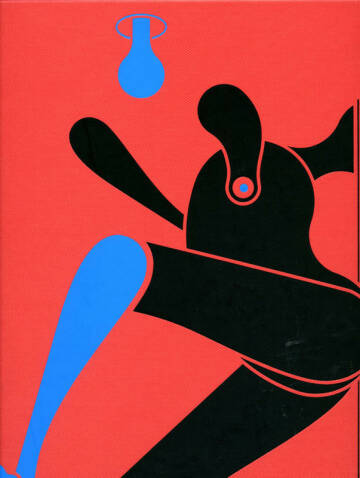













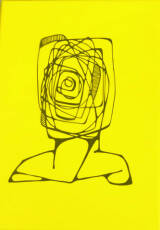


































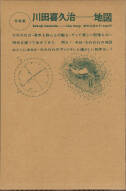
;jpg?c=30680946c79018a3c23d7b3ea13e8de6)
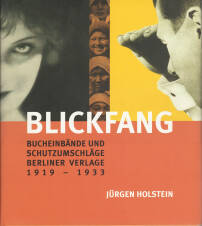

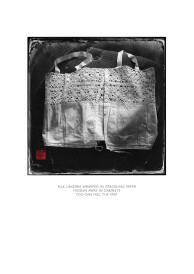




_;jpg?c=419d59e36ac6254ab2ee57eb072962ae)

_eisen._(bauen_in)_eisenbeton.;jpg?c=7c987624718ec649bc3c1722501b5add)
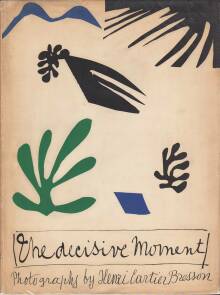

;jpg?c=3e12b2ca76fececba1dd3e19dc8e66f0)